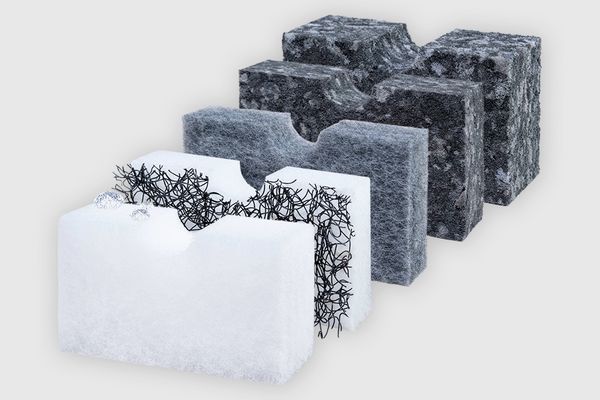Loss factor – measure of efficient vibration damping in sound insulation
The loss factor is a key parameter in technical sound insulation. It describes the ability of a material to convert mechanical vibrations into heat energy, thereby reducing sound transmission. A high loss factor means effective damping of structure-borne sound and vibrations, which minimises noise.
Loss factor and its significance in sound insulation
The loss factor plays a decisive role in numerous industrial applications:
- Machines & vehicles
Prevents disruptive vibrations and sound transmission - Buses & rail vehicles
Reduces structure-borne noise in walls, floors and ceilings - Heat pumps
Ensures quieter operation by damping resonances - Medical technology
Prevents unwanted noise emissions from devices - Cabins, capsules & hoods
Optimises sound insulation in closed systems - Construction & agricultural machinery
Reduces noise pollution through vibration damping - Room acoustics
Prevents disturbing resonances and improves the sound image

Materials with high loss factor for optimum sound insulation
✔ Heavy bitumen sheets
Excellent structure-borne sound insulation for vehicles and machines
✔ Heavy plastic sheets
Effective sound insulation with low weight
✔ Composite materials
Combination of damping and absorption materials for high efficiency
✔ Special acoustic foams
Reduce resonance and absorb sound
✔ PES non-wovens
Environmentally friendly, as they consist of up to 70% recycled
PET bottles. They offer high sound absorption and are particularly sustainable.

Loss factor as a quality feature for effective sound insulation
A high loss factor is crucial for reducing noise and vibrations. Cellofoam offers tailor-made solutions with optimum damping properties for industry, vehicles, heat pumps and room acoustics.
Discover sound insulation solutions now – for quieter and more efficient systems!









